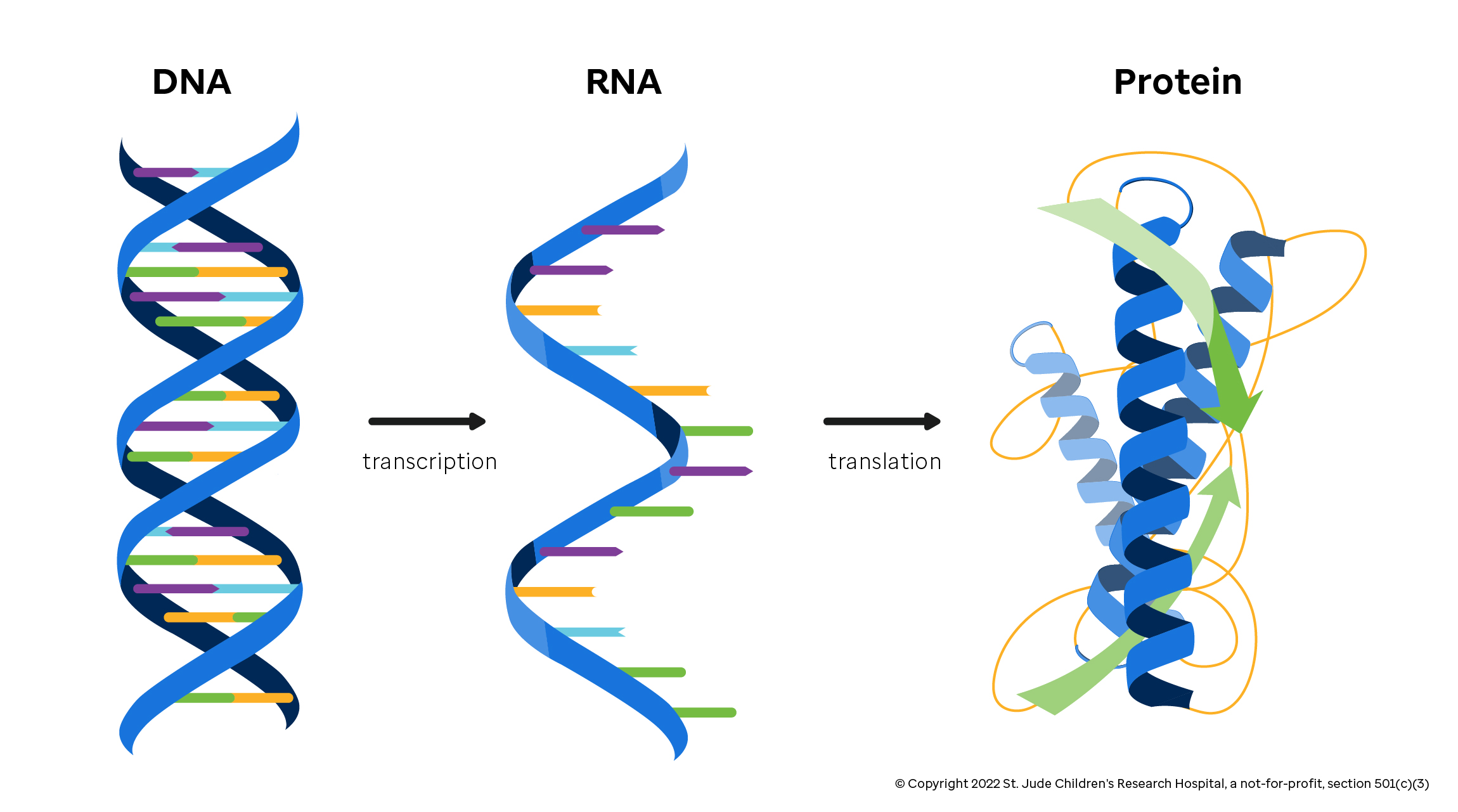The Central Dogma
Introduction
Essential to understanding the biology driving computational genomics analyses is an understanding of the "Central Dogma of Molecular Biology". The Wikipedia page for the Central Dogma is incredibly detailed. However, an overview and a simplified figure depict the process below.

The key takeaways for our purposes are as follows:
The complete information for replicating cells is preserved in DNA, which holds the instructions for creating proteins.
Before a cell produces a protein, the portion of DNA that encodes the protein is used as a template to create Ribonucleic Acid (or RNA) molecules through a process known as transcription. RNA is a temporary working copy of instructions, or a transcript.
Through the process of translation, the instructions in the RNA transcript are read and decoded to assemble a specific protein byproduct.
The Bakery Revisited
Let's continue to build upon our bakery analogy. In the previous chapter, we covered that DNA represents the complete recipe book for our bakery. In practice, this recipe book is kept locked away in the back office of the bakery (the nucleus of a cell). Only a few special staff members are allowed to go into the back office and read from the master recipe book. Rather than take the entire book out of the office when they leave, these staff members transcribe a copy of a particular recipe on a piece of paper (analogous to RNA transcripts). These working copies of the recipe are then carried out of the back office and given to the baking staff on the baking floor. Last, the baking staff uses these working copies to bake any number of physical cakes (analogous to proteins). Eventually, the working copies of the recipes are worn out and degrade, rendering them unable to be used by the baking staff.
A few important points as we expand our understanding:
- First, as stated earlier, there are only a finite number of the master recipes locked away (generally two, in the case of humans). However, there can be many, many working copies of the recipes floating around the bakery. Clearly, if more working copies of the recipe are floating around on the bakery floor, more cooks can work on that recipe at the same time, and more physical cakes of that type can be made.
- Next, occasionally mistakes are made in either the transcription or translation processes. These can be transient, and cells have built in failsafe mechanisms to identify and neutralize the effects of these mistakes. However, these mistakes can become the cornerstone for disease. As you can imagine, the further upstream in this process a mistake occurs (and especially if a mistake is persisted in the master recipe book), the higher the potential damage it can cause.